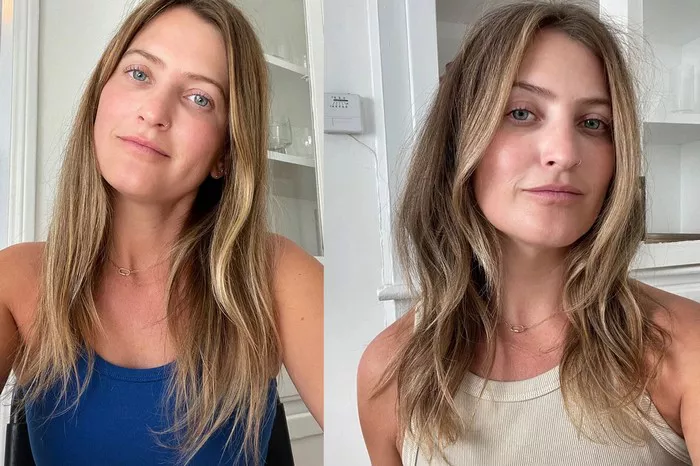Hair is often considered a woman’s crowning glory. From long, flowing locks to chic bobs, hair reflects personal style and identity. However, many women wonder about the lifecycle of their hair—specifically, at what age it stops growing. This article delves into the science of hair growth, the factors that influence it, and provides insights into maintaining healthy hair as we age.
1. Understanding Hair Growth
The Hair Growth Cycle
Hair grows through a complex cycle divided into three main phases:
Anagen Phase (Growth Phase): This phase can last 2 to 7 years, during which hair actively grows. Factors like genetics and overall health can influence the length of this phase.
Catagen Phase (Transitional Phase): Lasting about 2 to 3 weeks, this phase marks the end of active growth. Hair follicles shrink, and hair detaches from the blood supply.
Telogen Phase (Resting Phase): This phase lasts around 3 months. Hair is shed, making way for new growth in the next anagen phase.
Average Hair Growth Rate
On average, hair grows about half an inch (1.25 cm) per month, totaling approximately 6 inches (15 cm) a year. However, this rate can vary based on genetics, health, and environmental factors.
2. The Age Factor in Hair Growth
Adolescence and Early Adulthood
During adolescence and early adulthood, women experience the most rapid hair growth due to hormonal changes. The anagen phase is typically longer during this time, leading to healthier and fuller hair.
Mid-20s to Early 30s
By the mid-20s to early 30s, hair growth begins to stabilize. While hair may still grow well, changes in lifestyle, health, and hormonal fluctuations can begin to affect its vitality.
The Impact of Hormonal Changes
Pregnancy: Many women notice increased hair growth during pregnancy due to elevated hormone levels, particularly estrogen. However, postpartum hair loss is common as hormone levels return to normal.
Menopause: In the late 40s to early 50s, women undergo menopause, leading to hormonal changes that can slow hair growth and contribute to thinning hair.
See Also: Can Bleached Hair Turn Black Again? What You Want To Know
3. Factors Affecting Hair Growth
Genetics
Genetics play a significant role in hair growth patterns, including the age at which growth slows. Women with a family history of hair thinning may experience changes earlier than those without such a background.
Health and Nutrition
Diet: A balanced diet rich in vitamins and minerals is essential for healthy hair. Nutrients like biotin, iron, and vitamins A and D promote hair growth.
Medical Conditions: Conditions such as thyroid disorders, polycystic ovary syndrome (PCOS), and autoimmune diseases can adversely affect hair growth.
Hair Care Practices
Improper hair care practices, such as excessive heat styling, chemical treatments, and tight hairstyles, can lead to hair damage and breakage, affecting overall growth.
4. Signs Your Hair Growth May Be Slowing
Thinning Hair
If you notice more hair on your brush or in the shower drain, it may be a sign of thinning hair. This can be due to various factors, including hormonal changes, stress, or nutritional deficiencies.
Changes in Texture
A change in hair texture, such as increased dryness or brittleness, may also indicate slower growth or hair health issues.
Increased Hair Loss
An increase in hair shedding, particularly if it persists beyond the typical shedding during the telogen phase, can signal a problem that needs addressing.
5. Maintaining Healthy Hair Through the Years
Nutrition and Diet
Eating a well-balanced diet is crucial for maintaining healthy hair. Consider incorporating the following foods:
Leafy Greens: Rich in vitamins A and C, which help produce sebum, the natural conditioner for hair.
Nuts and Seeds: Packed with omega-3 fatty acids and vitamin E, promoting scalp health and hair growth.
Protein-Rich Foods: Hair is primarily made of protein (keratin), so including sufficient protein in your diet is essential.
Hair Care Routine
Gentle Cleansing: Use sulfate-free shampoos and avoid washing hair too frequently to prevent stripping natural oils.
Condition Regularly: Deep conditioning treatments can help maintain moisture levels and improve hair strength.
Regular Trims
Regular trims help prevent split ends and maintain the overall health of your hair. Aim for a trim every 6-8 weeks.
6. Lifestyle Factors Influencing Hair Growth
Stress Management
High-stress levels can contribute to hair loss. Incorporating stress management techniques, such as yoga, meditation, or regular exercise, can positively affect hair health.
Sleep Quality
Quality sleep is essential for overall health, including hair growth. Aim for 7-9 hours of sleep each night to allow your body to repair and regenerate.
7. When to Seek Professional Help
If you notice significant changes in your hair growth or experience excessive hair loss, it may be time to consult a healthcare professional or dermatologist. They can help identify underlying issues and recommend appropriate treatments.
8. Conclusion: Embracing Your Hair Journey
While there isn’t a specific age at which female hair stops growing, various factors can influence hair growth over time. Understanding the hair growth cycle, maintaining a healthy lifestyle, and adopting good hair care practices can help women manage their hair health throughout the years.
Embrace the changes that come with age, and remember that beautiful hair comes in many forms. Whether your hair is long and flowing or short and chic, it reflects your unique identity and should be celebrated at every stage of life. With the right care and attention, you can continue to enjoy healthy, vibrant hair for many years to come.
You Might Be Interested In
- Curly Hair Care: Should You Wash Your Curly Hair Every Day?
- Do You Put Hairspray on Before or After Curling?
- The Daily Wash Dilemma: Should You Wash Long Hair Every Day?


